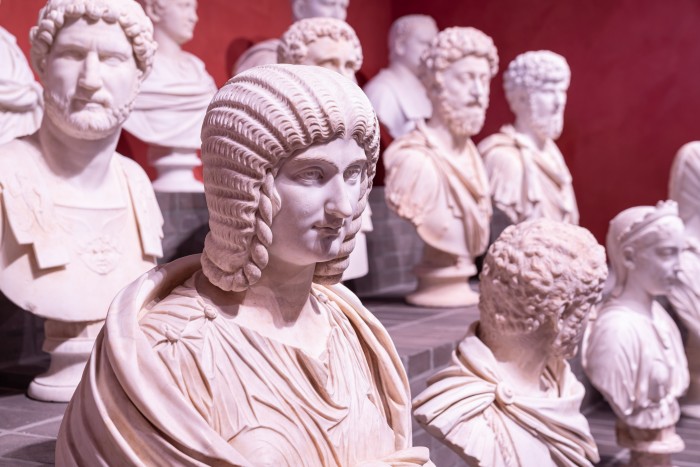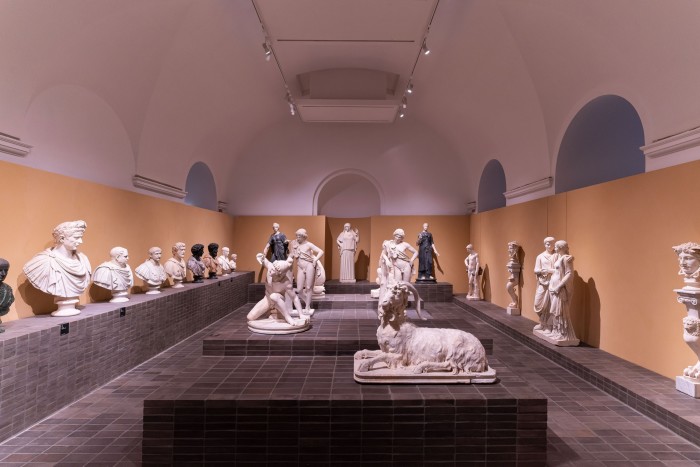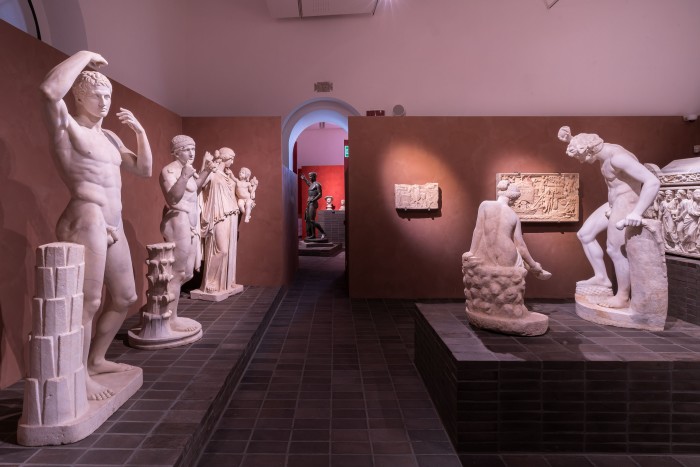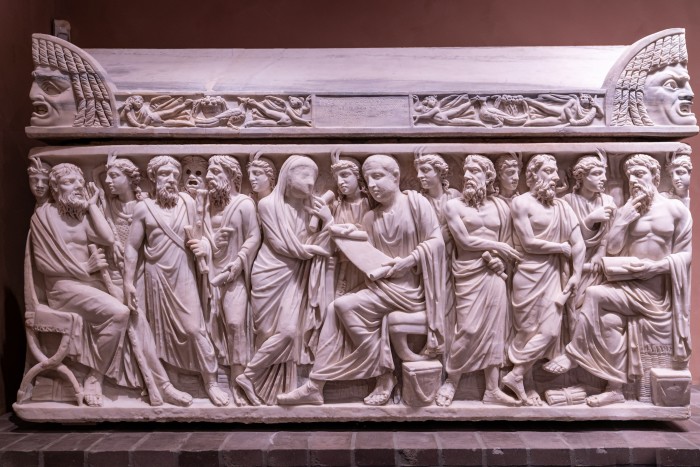Finally, one of the world’s finest – and most mysterious – ancient statue collections is unveiled

Roula Khalaf, Editor of the FT, selects her favourite stories in this weekly newsletter.
“An immense treasure of erudition and art, amassed in silence over the course of many, many years” is how archaeologist Pietro Ercole Visconti described, in 1881, what today is referred to as the collection of collections: the Torlonia Marbles. For the past 80 years – and much of their history before that – they have been enjoyed by a select few, behind closed doors. Until now.
An impressive body of 620 ancient Greek and Roman sculptures, the Torlonia Collection features statues, sarcophagi, bas-reliefs and busts in marble, bronze and alabaster portraying a rich array of mythical figures, gods and goddesses, and powerful Roman emperors. The influential Torlonias – who administered the Vatican’s finances – acquired existing collections from other aristocratic families in financial straits, and discovered additional marbles excavating the family’s own land. Theirs became one of the world’s most private of collections: it was only known to scholars through a 19th-century catalogue, and remained mostly unseen by the public, with the exception of visitors accepted by special appointment at the Torlonias’ private museum in Trastevere. But after the second world war, the artworks risked falling into oblivion.

Seventy years later, delayed but not derailed by Covid-19, The Torlonia Marbles: Collecting Masterpieces is on show at Rome’s Villa Caffarelli, with 96 sculptures selected and co-curated by archeologists Salvatore Settis and Carlo Gasparri, in an exhibition designed by David Chipperfield Architects Milan.
“It has been an extraordinary experience for myself and the design team at David Chipperfield Architects Milan to work on creating an architectural space for the first public display of the Torlonia Collection,” says David Chipperfield. “We feel the great responsibility to ensure that we are providing the ideal setting in which the public can encounter the sculptures as remarkable individual artworks each with unique characteristics and history, while also allowing them to be seen as part of an almost mythical collection accumulated over centuries.”

Standout pieces, dating from the fifth century BC to the fourth century AD, include the imposing bust of an old man from Otricoli, likenesses of the Greek hero Meleagros and the goddess Hestia, as well as a striking representation in polished black marble of Isis, the Egyptian afterlife goddess whose cult spread throughout the Greek and Roman world.
Other exhibits offer insights into historical interventions, such as the restoration of a resting goat sculpture by renowned Baroque sculptor Gian Lorenzo Bernini, or traces of the original pigments (blue for the sea, red for the lighthouse and yellow on the frame) from the bas-relief of Porto, which had been partly cleaned off in the 19th century, but which were later discovered by conservator Anna Maria Carruba.

The exhibition, sponsored by Bulgari, also sees the inauguration of Villa Caffarelli as a new artistic venue in the Capitoline Museums group. This should – travel permitting – be the first stop of an itinerant exhibition across Europe and the United States before the statues are permanently put on view at the new Torlonia museum, which is yet to open.
The Torlonia Marbles: Collecting Masterpieces is at Palazzo Caffarelli, Rome until 29 June 2021; museicapitolini.org
This article originally stated that David Chipperfield Architects Milan renovated Palazzo Caffarelli. This information was amended on 21 October 2020.
Comments